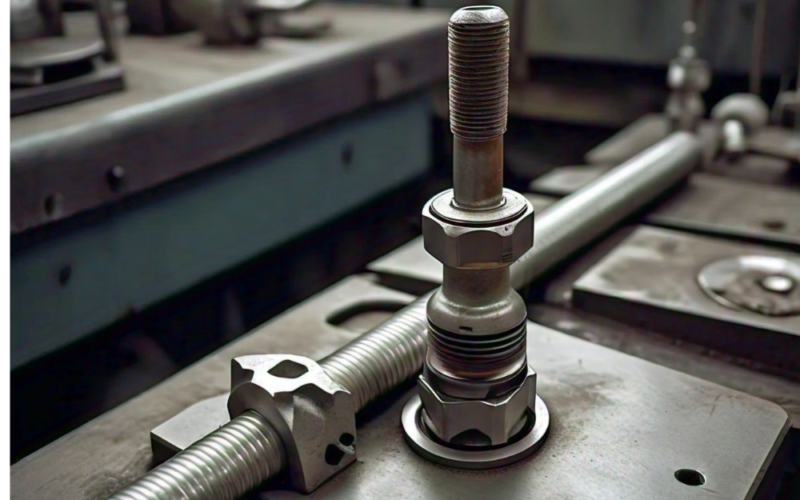How tight should anode rod be? This question is key to making your water heater last longer. A well-kept water heater gives you hot water for years. But, it depends on the right care of the anode rod. The anode rod protects your tank from rust by corroding instead.
It’s vital to get the anode rod tight to make your water heater work better and last longer. We’ll talk about why the anode rod is important, how to know when it needs replacing, and how to replace it correctly. This will help your water heater run well for many years.
What is an Anode Rod?
An anode rod is a special metal rod that reacts more than the tank’s metal. As it wears down, it stops the water heater tank from rusting. This can cause leaks and the need for a new heater. Anode rods are vital for protecting your water heater from corrosion.
Anode rods use electrochemical corrosion to protect the water heater tank. They “sacrifice” themselves to stop the tank from corroding. This way, the anode rod extends the life of the water heater.
Signs of a Depleted Anode Rod
When an anode rod starts to wear out, you’ll notice signs it needs replacing. Look for discolored or rusty water, a rotten egg smell, or less hot water. Check the anode rod often and replace it every 3-5 years to keep your water heater safe.
How Tight Should Anode Rod Be?
Keeping the anode rod the right tightness is key for your water heater’s life and performance. This rod protects the tank from corrosion. So, getting the tightness just right is crucial.
The usual torque for an anode rod is 15-30 foot-pounds (ft-lb). But, always check your water heater’s manual for specific advice. Tightening too much can harm the tank’s threads, while not enough might not protect against corrosion.
To get it right, use a torque wrench. It helps you measure and adjust the tightness accurately. Also, wrap PTFE thread sealing tape around the rod’s threads with five or six turns in a clockwise direction for a tight fit.
Some water heaters put the anode on top or the side. For those with hot water outlet anodes, replace them with the regular rods for best maintenance. Checking and keeping the anode rod tight is key to a long-lasting water heater. Follow the maker’s advice and use the right tools to make sure your rod protects your heater well.
In short, aim for a tightness of 15-30 ft-lb, but always check your heater’s manual. Keeping up with anode rod maintenance can save you from expensive repairs or replacements later.

Replacing Anode Rods: Step-by-Step Guide
Keeping your water heater in good shape is key for its long life and efficiency. The anode rod is a crucial part that helps prevent corrosion. Replacing it is easy but important to do right for a good fit.
1. Preparing for Anode Rod Replacement
Start by getting your water heater ready. Turn off the power or fuel and shut the water supply. Also, drain the tank to ease pressure. Make sure you have the right anode rod for your water heater model.
2. Removing the Old Anode Rod
Removing the old anode rod can be tough if it’s corroded and stuck. Use an impact wrench or breaker bar to loosen it. If it doesn’t come out easily, you might need to use a lubricant or cut the rod.
3. Installing the New Anode Rod with Correct Torque
After removing the old rod, put in the new one. Wrap plumber’s tape or sealant on the new rod for a good seal. Then, screw it into the tank and tighten it with a torque wrench to the recommended amount, usually 15-30 foot-pounds. By following these steps, you can replace your water heater’s anode rod correctly. This simple task helps keep your water heater running well and saves you from future repair costs.
Maintenance and Inspection Best Practices
Regular maintenance and inspections are key to making your water heater last longer. Check the anode rod for damage, flush the tank to clear sediment, and make sure the temperature and pressure relief valve works right.
A Proline electric water heater usually lasts about 10 years. By doing these maintenance tasks, you can make it last even longer and save money on replacements.
1. Anode Rod Inspection
Check the anode rod every six months and replace it if it’s worn out. This stops corrosion and keeps your water heater going strong. If you have hard water or use a water softener, check and replace the anode rod more often.

2. Sediment Flushing
Drain and flush your water heater after six months to check for sediment. How often you do this depends on your water’s hardness. Flushing removes sediment, making your water heater work better and last longer.
3. Temperature and Pressure Relief Valve
Make sure the temperature and pressure relief valves is working right by checking it often. This valve stops the tank from bursting by releasing too much pressure or heat.
By following these tips, you can keep your water heater running well and avoid expensive repairs.
Conclusion
Keeping the anode rod tight is key to making your water heater last longer. By knowing how the anode rod works, checking it often, and replacing it when needed, you can stop corrosion. This keeps your water heater working well for a longer period of time. Following a detailed guide on replacing the anode rod and sticking to a maintenance plan helps you save money and trouble later.
It’s important to take care of your water heater’s anode rod to keep it working well. By checking and replacing the anode rod when it’s needed, your water heater will keep giving you hot water for a long time. Taking care of the anode rod is a simple but effective way to make your water heater last longer. By focusing on making your water heater last longer with anode rod care, you protect your investment. Use the tips from this article to keep your water heater working well for many years.

